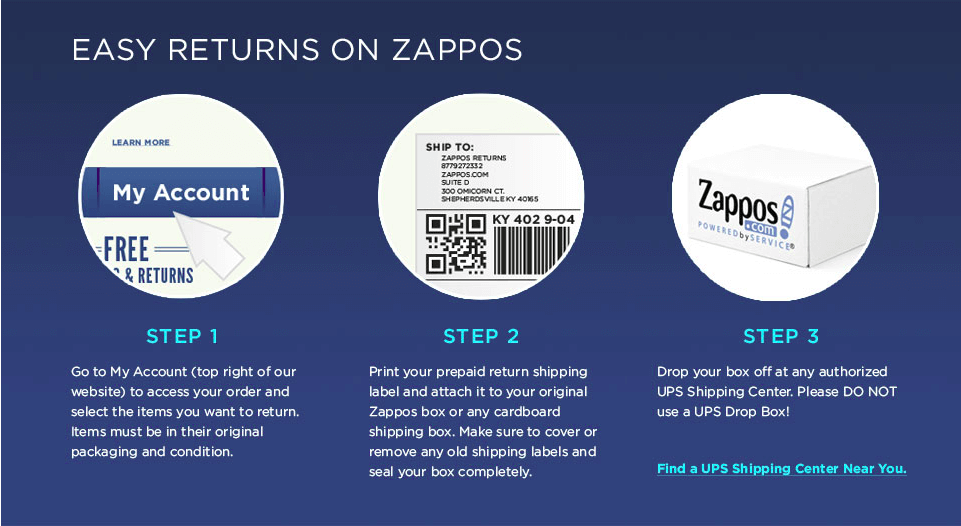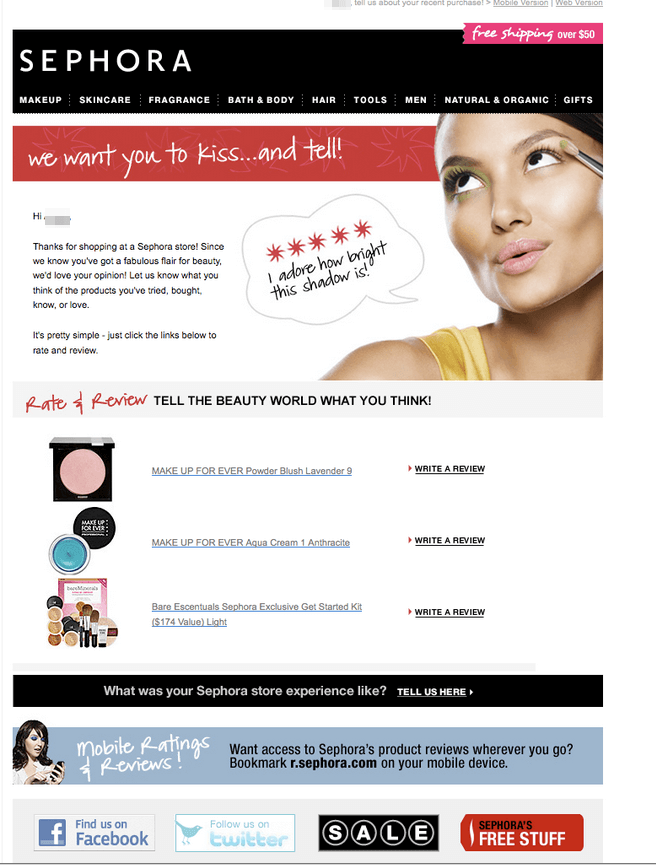Cognitive dissonance is the psychological discomfort we experience when our belief clashes with contradictory information. This unsettling state of anguish, in turn, motivates us to reconcile the difference, either by changing our behavior or altering the importance of conflicting/dissonant beliefs.
Let’s take an example.
A smoker enjoys smoking, but also knows it’s detrimental to health. To minimize dissonance, they can give up smoking (change behavior) or rationalize their habit saying everyone has to die one day, or it isn’t as harmful as drinking. The latter sounds bizarre, but shows the extent to which people are willing to go to reclaim their peace of mind!
So what’s it got to do in an ecommerce setup? A lot.
As more and more people are shopping online, they’re also becoming increasingly skeptical. They notice every tiny detail before they hand over their hard-earned money to you! This means there’s even more of a chance that if they come across any conflicting information on your website, they will experience cognitive dissonance.
You, therefore, must identify loopholes and create a plan that solidifies their trust in you.
Wondering what can trigger cognitive dissonance and how to deal with it? Keep reading to find out.
Display Trust Signals On Your Website
As a safety measure, one of the first things online shoppers do to lower the perceived risk of transaction is look for trust signals, some of which are discussed below.
#1: Multiple, Reputable Payment Options
According to a survey published on HubSpot, 59% of buyers abandon a transaction if their preferred payment option isn’t available. Why? Because people have a varying degree of loyalty towards different payment methods. So bear that in mind and tailor your payment process accordingly. You’ll be leaving a lot of money on the table if you don’t!
Think about your target audience demographics and payment behavior in specific countries and regions. After all, the mode of payment popular in the US may not necessarily be as popular in Asia.

#2: Trust Logos
With fraud cases on the rise, people are wary about sharing their private information, fearing it will be misused. The good news though is that with trust logos (privacy seals, SSLs, or brand association badges) in place you can tell your customers they are in safe hands.
So, which ones are recommended to use on your website? Well, there’s no one straightforward answer. A famous Baymard’s trust study from 2013 states that people don’t have a preference between trust seals and SSL seals, but they definitely show a preference for antivirus companies, possibly because they are familiar with them. This perceived sense of security based on familiarity implies that people simply want to see a trust seal because it makes them feel safe.
To dig a little deeper, CXL Institute conducted a study to expand on the above-stated Baymard Institute’s findings. They found out that familiar brands like Norton, Visa, Mastercard, PayPal, and Google are the most trusted seals when paying online. What they also discovered was gender and generational differences in ‘perceived’ security. Clearly, this means you must optimize for your audience and not randomly choose a trust logo.

#3: Reviews and Testimonials
By showcasing social proof on the homepage, product or the pricing page, and near the shopping cart, you will:
- Reassure your customers of their choice.
- Counter any objection/contradictory thought that surfaces in their mind.
- Stop them from unnecessarily overthinking the consequences.

If you run a platform like Etsy, it’s a good idea to add seller ratings to put your customers at ease, as shown below.

#4: Money Back Guarantee
Giving a money back guarantee is a surefire way to keep post-purchase dissonance at bay. There’ll be no room for regret because the stakes are low. Customers can return the product if they are even slightly dissatisfied with it!
But simply ensuring a money back guarantee isn’t sufficient. You’ve got to have a simple and transparent return and refunds process explained on your website. There’s every chance these customers will buy from you again. Here’s proof: 95% of shoppers prefer buying again from the same platform if they had a positive and convenient exchange or return experience.

Order Confirmation Transaction Emails
If you didn’t know, an order confirmation email has the highest average open rates at 70%! Two reasons why:
First, it casts away a customer’s apprehension and informs them that their order has been received. Second, it gives them a sense of security; these emails function as receipts required at the time of reimbursement and returns.

If you haven’t been sending order confirmation emails, you’re breaching their trust. The only way to right this wrong is to start sending them and make sure they include:
- A personalized thank you note to extend the excitement of their purchase.
- Purchase details, like the order number, purchased item (with images), payment details, delivery address etc.
- Shipment tracking and an estimated delivery time frame.
- Customer services’ contact information and a link back to the website.

Leverage the Choice-Supportive Bias
Have you ever bought something and immediately regretted it, but also defended your decision because you believe you don’t make bad decisions? That’s choice-supportive bias in action.
During this decision-rationalizing process, we tend to ‘ascribe positive attributes’ to our choice and amplify the negative features of the rejected option. Think of it as a way to reduce cognitive dissonance.
When it comes to your customers, you can reinforce the bias by sending positive and reassuring messages during key stages of their journey. They will end up feeling terrific about themselves!
‘Great choice, there’ or ‘Your cart has some of our bestsellers’ is a perfect way to flatter someone adding a product to their cart. It validates their choice and motivates them to keep shopping. You can also recover abandoned carts by featuring testimonials in your emails. It triggers the choice-supportive bias and before you know it, your customer’s back on the purchase path!
In fact, once they checkout, pep them up with a congratulatory, ‘What fine taste’ message!

Another way to activate choice-supportive bias is by pitting free and premium features against each other. The free trial user will immediately be more confident about their choice and might even become a paying customer!

Create a Sense of Closure
Customers love having choices but also find it overwhelming. Even when they do zero down on one and buy it, they agonize over all the other still available options and begin to regret their decision! This is why it’s important you offer some kind of choice closure to your customers and shut their minds off from alternate choices!
An effective choice closure strategy is asking for product reviews. Make sure you time your request and ensure they’ve used your product long enough to write a review that’s closer to their actual experience.

Provide Exceptional Customer Service and Support
There’s nothing more dreadful than dealing with a customer who’s having second thoughts about their purchase! It may seem like all your efforts of building a customer-client relationship have gone to waste. One way you can rectify this situation is by providing an excellent customer service. And it starts with being there for them at every stage of their buyer’s journey.
7 out of 10 U.S. consumers say they’ve spent more money to do business with a company that delivers great service. Plus, when it comes to making a purchase, 64% of people find customer experience more important than price.
What’s interesting is that even businesses have realized it:

Speaking of which, here’s how you can follow suit and prioritize customer satisfaction:
- Ensure your customer services and support team knows the business inside-out.
- Have a contact page easily accessible from anywhere on the website.
- Mention how long it takes you to respond to queries. It’s called expectations management.
- Do away with canned responses; become more human.
- Use a live chat tool for faster customer support and better customer experience. A study revealed that as many as 77% of customers won’t make a purchase on a website if there’s no live chat option available!

Once a customer has a stellar experience with your brand, they will stick with you for longer and become repeat customers. Furthermore, their word-of-mouth marketing will grow your existing customer base!

Send Feedback Surveys to Feel Your Customer’s Pulse
Listening to your customers is the quickest way to learn what causes buyer’s remorse. But getting actionable insights means asking the right questions. Have a look on what to ask:
- What made you buy the product?
- How is it helping you?
- What doubts did you have before buying it?
- What was the biggest challenge in finding the right product?
- What made you nearly abandon our website?
- Was there any particular information you couldn’t find an answer to on the website?
- Any other comments or remarks?
Meanwhile, it also helps to follow some of the best practices when creating a survey:
- Use simple, jargon-free language.
- Throw in a variety of questions, e.g.: multiple choice, likert scale, ranking, rating etc.
- Ask neutral questions like ‘How helpful was our customer services team today?’.
- Avoid double-barrelled questions, which means address only one topic per question.
- Show a progress bar to keep them going.
- Ask open-ended questions towards the end.
- Test on multiple devices.
- Always A/B test.

With that taken care of comes the timing of the survey. Ideally, send it when you’re still fresh in their minds. Their answers will be closer to their actual experience and you’ll be on your way to fixing bad experiences in no time!
Connect With Them Over Your Blog
The more invested a customer is in you, the stronger the chances they will slip into a state of cognitive dissonance. It’s especially true for B2B buyers.
To tackle this, develop an ongoing stream of content in the form of a blog. Apparently, 71% of B2B buyers engage with blogs during the purchasing process. Your customers are no different. A Content Preferences Survey Report says, 47% of buyers consume three to five pieces of content before contacting a sales rep.

Once you consistently create valuable and relevant content, you’ll be viewed as an expert. Combine that with your interest in interacting with your readers in comments, and you’ll create massive opportunities for your sales team. Prospects will walk straight into your marketing funnel because you seem trustworthy, interested in helping first and clinching a sale later.
You can learn a great deal about getting blogging right from Zapier. They write detailed, informative posts and are able to impress their website visitors.

Wrap Up
By now you know the strategies you can use to reduce the chances of your customers experiencing cognitive dissonance.
Remember that all that your customer expects is a smooth experience from the beginning to end. They should be able to locate trust signals, know you’ve received their order, and that you are there when they need your help. Even returning the product shouldn’t be a hassle.
Also, shut them off from available options to reduce post-choice regret and analyze survey feedback to learn about the source of their buyer’s remorse.
Over to you now: How ready are you to take the bull by the horns?!




